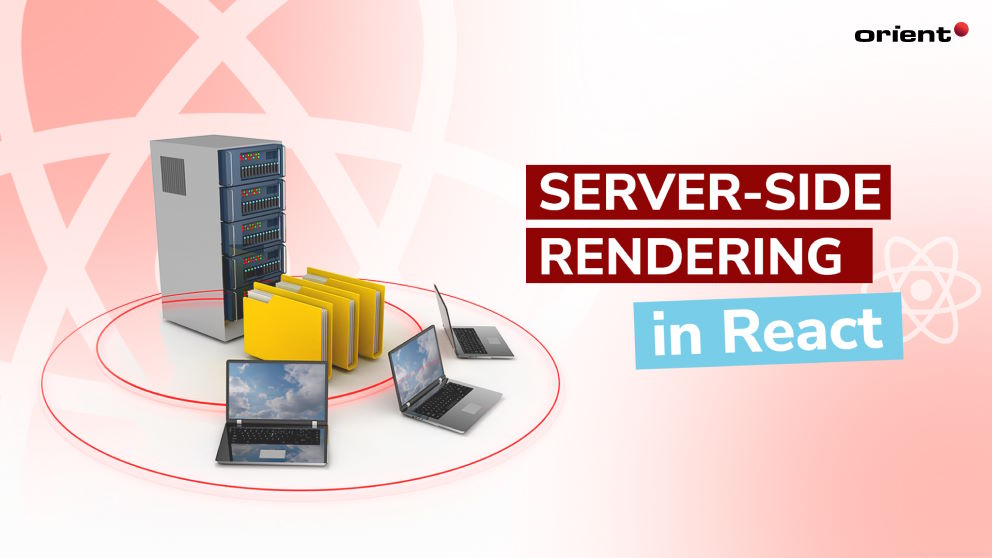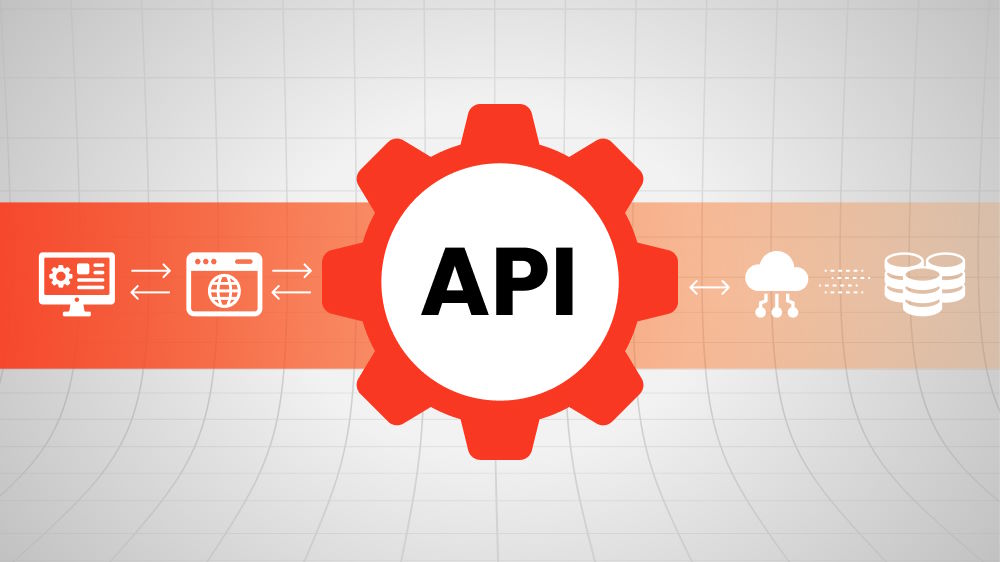Boosting Web Page Speed and Accessibility: Why Server-side Rendering in React Matters

Content Map
More chaptersWhen it comes to building dynamic web applications, server-side rendering (SSR) in React emerges as a powerful tool. By leveraging SSR, developers can create interactive and performant user interfaces without solely relying on client-side JavaScript execution.
The emergence of modern technologies like Node.js has paved the way for optimized content delivery from the backend directly into the frontend codebase. This approach not only accelerates loading times but also provides unprecedented control over the displayed content on each page request. Additionally, server-side rendering seamlessly integrates with state management features inherent to React, enhancing the development process.
In this article, we will delve into the benefits of utilizing server-side rendering in React, offering insights into how it functions behind the scenes. We will explore the advantages it brings, such as improved loading speed and enhanced accessibility. Moreover, we will provide practical guidance on integrating server-side rendering into existing projects. Along the way, we will address common challenges associated with server-side rendering, such as performance optimization and maintenance considerations.
Yet to Know Server-side Rendering (SSR)?
If you’re new to the world of web development or unfamiliar with terms like “create react app (CRA),” “JS file,” “node server,” “server code,” and server-side rendering (SSR), you’re in for an exciting journey. Server-side rendering is a great solution for rendering web pages that will enhance user experience, content distribution, initial page load time, and search engine optimization (SEO), particularly in frameworks like React.
What Exactly is Server-side Rendering in React?
In a nutshell, server-side rendering (SSR) in React refers to the process of rendering React components on the server and sending the pre-rendered HTML to the client. In traditional client-side rendering (CSR), the initial rendering of the React components occurs on the client’s browser.
With SSR, the server generates the HTML for the requested page, including the React components and their data. This allows search engines and social media crawlers to easily crawl and index the content, leading to improved SEO and better performance for users.
The server-side rendering process includes the following steps:
- When a user requests a page, the server receives the request.
- The server executes the necessary logic, including fetching data from APIs or databases if required.
- React components are rendered on the server using the provided data, generating the HTML markup.
- The server sends the pre-rendered HTML along with any required JavaScript bundles to the client.
- The client receives the HTML content from the server and begins rendering it immediately.
- Once the JavaScript bundles are loaded, the client takes over the interactivity and event handling of the rendered components.
The key benefits of React server-side rendering include improved initial page load time, better SEO, and enhanced user experience, especially for users with slower network connections.
However, SSR can introduce additional complexity to the development process, as it requires server-side setup and handling of both client and server rendering. Additionally, it may not be suitable for all types of applications, especially those heavily reliant on client-side interactivity and real-time updates.
React provides libraries and frameworks such as Next.js and Gatsby.js that simplify the implementation of server-side rendering, making it easier for developers to leverage the benefits of SSR in their React applications.
Server-side Rendering (SSR) vs Client-side Rendering (CSR)
The difference between client-side rendering (CSR) and server-side rendering (SSR) lies in the way the content is rendered and delivered to the user. In CSR, the server sends a bare-bones HTML file to the client, and then the JavaScript code executes on the client side to fetch data and render the content. This means that the user has to wait for the JavaScript to load, execute, and render the content before seeing anything meaningful on the screen.
On the other hand, server-side rendering (SSR) takes a different approach. It generates the complete HTML on the server before sending it to the client. This means that the user receives a fully rendered HTML page right from the start, providing a faster and more seamless user experience. The server-side rendered content is also accessible to search engine crawlers, improving SEO and discoverability.
Which Benefits Does Server-side Rendering in React Offer?

Accessibility Advantages of Server-side Rendering
Improved Accessibility for Users with Slower Connections or Limited Browser Capabilities: SSR addresses the needs of users with slower internet connections or devices with limited memory and processing power. By performing the initial rendering of React components on the server, the server-rendered React app ensures that users can access and view content even in challenging network conditions. This makes web applications more inclusive and accessible, reaching a wider audience regardless of their browsing capabilities.
SEO Benefits and Better Indexing of Content: SSR plays a critical role in SEO by providing search engines with pre-rendered HTML content. Unlike Client-Side Rendering (CSR), where search engines struggle to parse JavaScript files-heavy websites, SSR delivers fully rendered HTML to search engine crawlers. This ensures that the content is properly indexed and displayed within search results, improving the visibility and discoverability of your web application.
Content Availability with Disabled JavaScript or Error Encounters: Another advantage of SSR is its ability to ensure content availability even when JavaScript is disabled or encounters errors. Since SSR generates the initial HTML on the server, users can still access and view content even if JavaScript fails to execute or encounters issues. This robustness ensures a seamless experience for all users, regardless of their browser settings or technical difficulties.
Speed Optimization with Server-side Rendering
Reduced Time to First Paint (TTFP) and Faster Content Delivery: SSR significantly improves initial page load speed by delivering fully rendered HTML from the server. Users receive a complete page right from the start, eliminating the waiting time associated with JavaScript execution in Client-Side Rendering. This faster content delivery improves user experience, engagement, and satisfaction with your web application.
Elimination of Additional Round Trips for Initial Data: With SSR, the server performs the initial rendering and fetches the necessary data before sending the fully rendered HTML to the client. This eliminates the need for additional round trips between the client and server to fetch initial data, resulting in faster loading times and improved performance. Users experience quicker access to content, reducing frustration and bounce rates.
Enhanced User Experience with Server-side Rendering
Faster Time-to-Interactivity (TTI) and Improved Interactivity: SSR contributes to a faster time-to-interactivity by delivering a fully rendered page to the user, allowing them to interact with the content more quickly. This enhances the perceived performance of your web application, ensuring that users can engage with the interface without delay. The improved interactivity during the initial page load leads to a smoother and more engaging user experience.
Progressive Enhancement of Server-Rendered Content: SSR enables the progressive enhancement of server-rendered content with client-side interactivity. Once the server-rendered content is delivered, React takes over on the client side, attaching event handlers and enabling advanced features. This combination of server-side rendering and client-side interactivity provides a seamless user experience, combining the benefits of both approaches.
Seamless User Experience Across Devices and Networks: The use of SSR ensures a consistent and seamless user experience across devices and networks. Regardless of the user’s device or network conditions, the fully rendered HTML content is delivered, allowing users to access and interact with the application without being hindered by slow connections or device limitations. This versatility enhances user satisfaction and engagement.
Let’s Get Started with Server-side Rendering in React
Implementing SSR in React projects requires careful consideration to ensure a successful implementation. By understanding the key considerations and leveraging appropriate React tools and frameworks, developers can effectively implement SSR in React.
Considerations when Implementing Server-side Rendering in React Projects
Project Requirements and Complexity: Understand the specific requirements of your project and evaluate whether SSR is the right fit. SSR is beneficial for content-heavy applications, SEO optimization, or enhanced initial load times. Consider the complexity of your React project and assess whether the potential benefits of SSR outweigh the additional implementation complexity.
Server-side Environment: Set up a server-side environment that supports SSR in React. This typically involves configuring a server (such as Node.js with Express) to handle server-side rendering requests and interact with your React application. Ensure that your server infrastructure is properly set up and optimized to handle SSR efficiently.
Routing and Code Splitting: Plan your routing and code splitting strategy carefully to optimize SSR. Consider how your routes and code splitting configuration aligns with the desired SSR behavior, ensuring efficient rendering and navigation on both the server and client.
Tools and Frameworks for Server-side Rendering in React
Next.js
Next.js is a popular framework built on top of React that simplifies the implementation of SSR. It provides an out-of-the-box SSR configuration, automatic code splitting, and server-side routing. Next.js abstracts much of the SSR complexity, making it easier to leverage SSR in React projects.
Gatsby
Gatsby is another powerful framework that enables SSR and static site generation (SSG) in React projects. It offers a rich ecosystem of plugins and optimizations for high-performance SSR. Gatsby is particularly useful for content-driven websites, blogs, or projects that require SEO optimization.
Custom SSR Implementations
For more control and flexibility, you can opt for custom SSR implementations using frameworks like Express, Koa, or Hapi. Custom implementations provide the flexibility to fine-tune SSR behavior according to your project’s specific needs. However, they require more development effort and expertise.
React Server Components (Experimental)
React Server Components, an experimental feature in React aims to streamline SSR by allowing components to be rendered on the server and streamed to the client. While still under development, React Server Components show promise for simplifying and optimizing SSR in React applications.
By taking into account these implementation considerations and leveraging the appropriate tools and frameworks, developers can successfully implement SSR in React projects. Worth mentioning: Orient Software is a specialized outsourcing company with expertise in implementing software development services. With a team of experienced developers, Orient Software can provide dedicated resources and expertise to help you successfully implement SSR in your React projects. We have a deep understanding of SSR concepts, best practices, and the tools and frameworks required for efficient SSR implementation. Contact us today to empower SSR to build robust and performant React applications that cater to a wide range of user needs.







